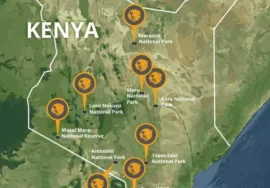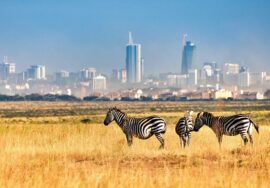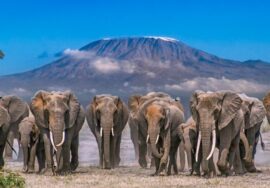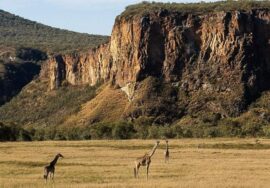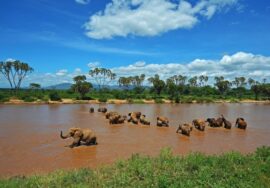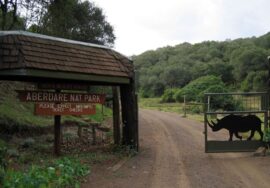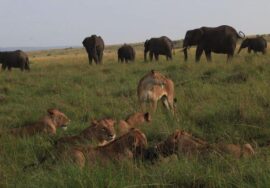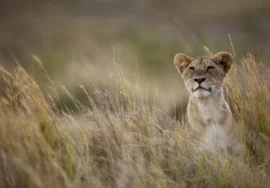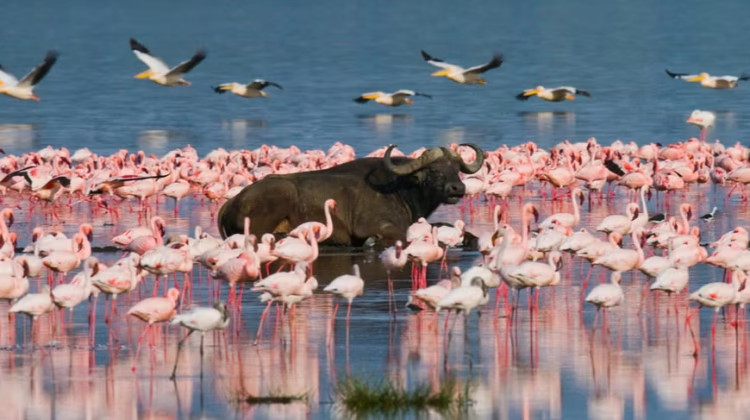
LAKE BOGORIA NATIONAL RESERVE
LAKE BOGORIA NATIONAL RESERVE, You might think you’re on another world because of the bubbling mixture of geysers, steam, and hot springs. That is, unless you see the dreamy flocks of pink flamingos right in front of you. Lake Bogoria National Reserve is a very different kind of adventure. It is a high mountain lake that doesn’t get many visitors but is home to a huge variety of birds. During some times of the year, there can be over two million flamingos, covering the shore with their bright pink feathers.
Even though it doesn’t have a lot of the biggest African animals, you can still see impala, zebra, gazelle, warthog, buffalo, klipspringer, monkey, baboon, and more. and sometimes leopards and cheetahs. There may be a lot of greater kudu, an antelope, feeding near the lake, close to where the flamingos are.
The flamingo and other birds of prey
Because of the minerals and volcanoes in the area, Bogoria Lake is very salty and alkaline. Blue-green algae grow well in this chemical soup, which in turn gives the large groups of lesser and some greater flamingos that come to the lake’s edges plenty to eat. Depending on the time of year and the season, you might be in the middle of one of the largest groups of flamingos in the world.
A lot of hawks, including tawny eagles and 135 other bird species, are also drawn to this harsh high-altitude lake. Watch out for the beautiful grey-crowned crane, the hornbill, the heron, the ibis, the ostrich, and the buzzard.
Gases and springs from volcanoes
The life that bubbles and spouts from beneath the earth is just as powerful as the life that lives on the surface. There are 18 geysers here, which is more than anywhere else in Africa. And some of them erupted through the lake in fiery plumes that rose up to 5 m (16 ft) in the air. It was a spectacular show of volcanic power.
Over 200 hot volcanic springs can be found around the lake and on its edges. These springs are warm enough to boil eggs.
Don’t Forget…
The Birds: Of course, you can’t miss seeing the thousands or more of bright pink flamingos floating on the blue lake. If you walk up to them slowly, they’ll stay close, making for picture-perfect moments.
Just outside the park is Kesubo Swamp, a popular place to watch birds. Watch out for hawks and other types of birds, such as grebes, swifts, spoonbills, and more.
Lake Baringo: Lake Baringo is the watery counterpart to Lake Bogoria and is home to many birds. Birds like hornbills, herons, owls, and even hippos and alligators can be found there.
Take a bike tour. You can walk around the lake, but you can also ride a bike and see the animals that are feeding, the clouds of flamingos, the plumes of geysers, and more.
Eggs easy: Where else can you cook straight from the farm? People who live here sell eggs right outside the park. Get some and boil them in one of the natural hot springs. Quick meal.
Look at the Lake Bogoria National Reserve.
This small high-altitude park is only 107 sq km (41 sq mi) and is 1500 m (1 mi) above sea level.
The area is about 239 km (148 mi) south of the equator and not too far from Nairobi.
The weather will be even, with afternoon temperatures of 280C (820 F). Because it is higher up, it can get cold at night. Temps of 120C (530 F) in the early morning are not uncommon.
From January to February, it doesn’t rain, but from September to May, it does.
When is the best time to go? When the flamingos are in bloom. From August to October, when the lake is low, large groups of fuchsia birds come to live there. Even though their numbers change often, you can usually count on seeing a lot of these beautiful birds all year long.
From sunrise to sunset, the business is open.
How to get there: Safari Trips to Kenya can help you book a tour. It will be a style trip because the 4×4 safari Jeep is specially equipped for it.

